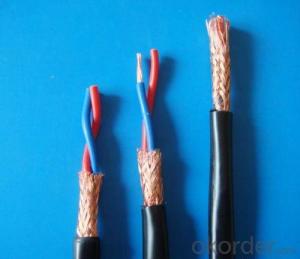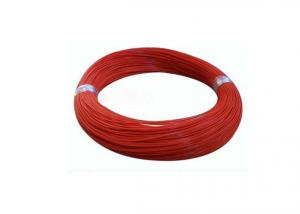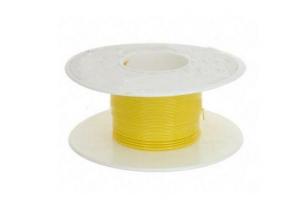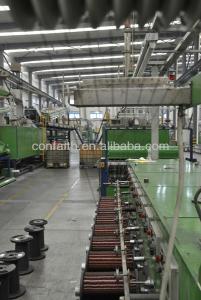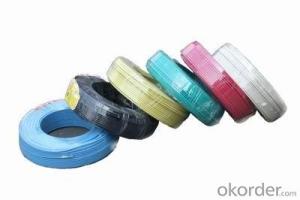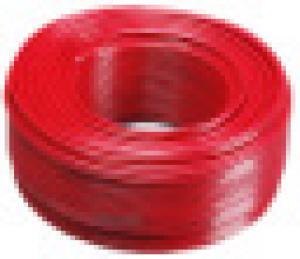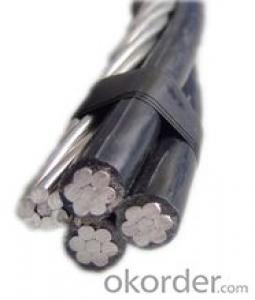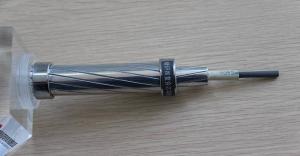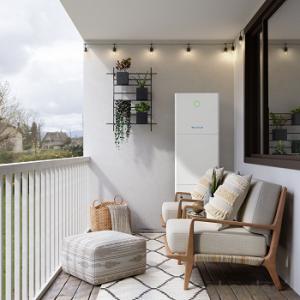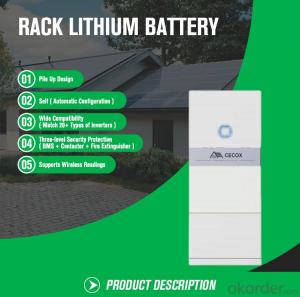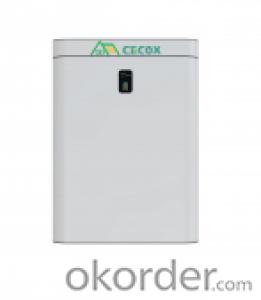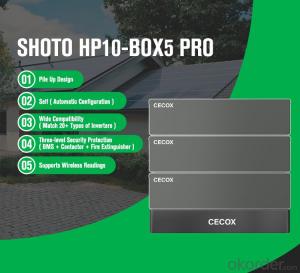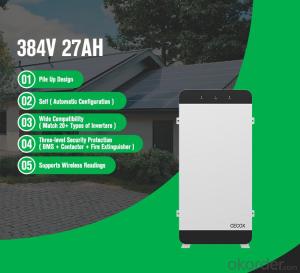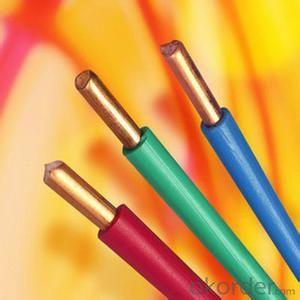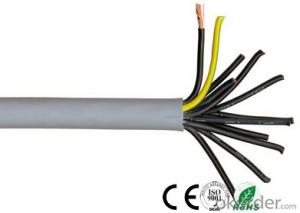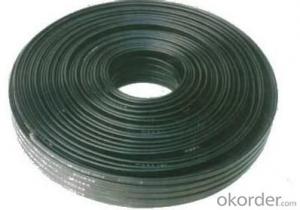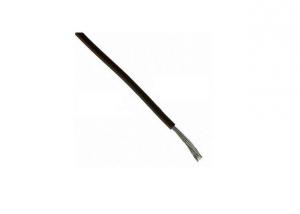Instrumentation and Signal Control Cable 300/500V, 450/750V
- Loading Port:
- Shanghai
- Payment Terms:
- TT OR LC
- Min Order Qty:
- 500 m
- Supply Capability:
- 100000 m/month
OKorder Service Pledge
OKorder Financial Service
You Might Also Like
1. Product Description
Copper Conductor, XLPE Insulated, Braiding Shielded, PVC Sheathed Flexible Control Cable
GB9330-1988,IEC,DIN,BS,450/750V AC
2.450/750V Copper Coductor PVC Insulated and sheathed Flexible Control Cable
Detailed Product Description
3. The control cable can be produced according to the standard GB9330-1988, IEC, DIN, BS, and the factory can also manufacture the cables in accordance with other standards.
4.The control cable are suitable for the wiring of electrical controlling equipments and instrument, monitoring and controlling return circuit, electrical protection and measurement in power distribution unit under the circumstance that the rated voltage is up to 450/750V AC.
2. Product Characteristic
Maximum operation voltage: 600 V.
2, Maximum operation temperature in the conductor:
90°C In a dry environment.
75°C in a wet environment.
3. Soft drawn concentric lay stranded copper conductor class B (7 wires).
4 Manufactured in sizes from 0,823 5 to 5,26 mm2 (18 to 10 AWG).
5, No-flame propagation characteristics
3. Product Specification
Voltage Rate | 300/500V, 450/750V | |
Cores | Twisted Pair 1~50 pairs or Triple 1~20 | |
Range of Nominal cross section: | 0.50 mm2 ~2.5 mm2 | |
Application | It is applicable to inspection instruments connection and the signal transmission of electronic computer system, monitoring loop, automatic control system. | |
Standard | IEC60092, BS5308, TICW6-2009 | |
Constructions | Conductor: Class 1/2 annealed bare copper solid or strands or Class 5 fine annealed copper wire Insulation: PVC, XLPE, PE Sheath: PVC | |
Max. Operating Temperature | 70℃, can be 90℃ as per requirement | |
4. Reference Picture
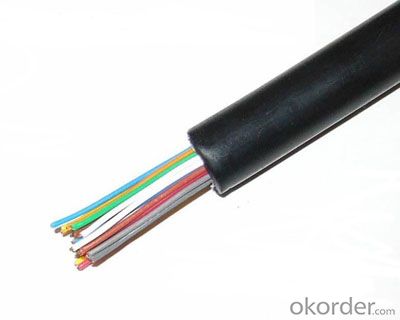
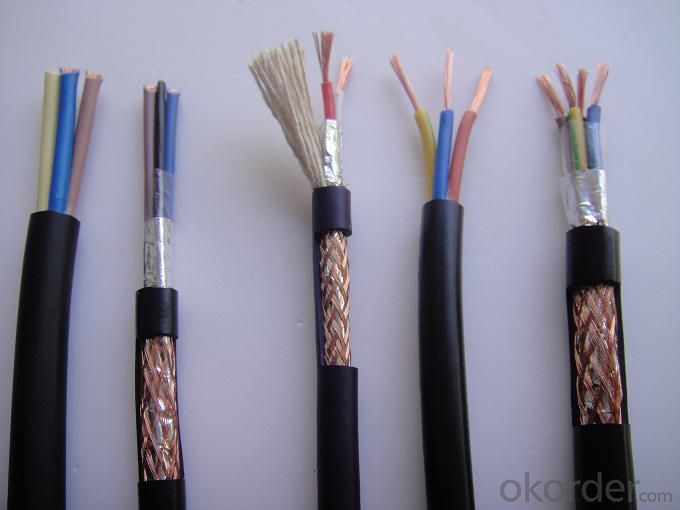
- Q:Wire on the 3 +2 with 4 +1 What is the meaning, please speak of the popular point, too professional do not understand.
- If it is a cable trench, in general, the mortgage cable is on top, the high voltage cable is underneath
- Q:1/0 AWG. RADAFLEX ^ to 90C, 1580 strand count, 32 AWG wires. Knukonceptz ^ to 105C 5145 strand count 36 AWG wire Not a huge difference in C but a huge difference in strand count I was just curious to as how strand count and size effects current flow?
- Finally, someone who knows what he's talking about. N2Audio is exactly right. If you need the wire to flex or go around tight corners, fine stranded is much easier to work with. 1/0 wire would be impossible to run if it was thick strand like power wire. Skin effect is the tendency of high frequency radio to flow along the surface of a conductor. It's why some big antenna lines have hollow center conductors or small antenna lines can use copper cladded steel.
- Q:i was working on this car and somehow crossed these wires and it starting smoking really bad under the dashwell the lady had her dog in the car .to say the least the doors locked and flames were rolling by the kick panelwe couldnt get the dog out in time.is there a way to get my license back.i really like to work on cars
- YOU my friend, are the unluckiest guy I have ever heard of! In 25 years of working on cars, I have NEVER heard of anyone losing their ASE certification. My guess is you won't get it back, because they must have found you seriously negligent to take such a severe step against you. If you feel you have been unjustly punished, contact an attorney. You may have grounds for legal action. the initial appointment is usually free, and sometimes you pay nothing unless your attorney wins. Good luck to you. That is an awful thing to happen to a professional mechanic.
- Q:I want to install a new lighting fixture outside. It says that the supply wire must be minimum 75C. I'm thinking it means 75 degrees Celsius/Centigrade. It's an older house (1950s) and I want to know if the wires it currently has are able to withstand the heat it may generate.
- 75 Degrees Centigrade
- Q:I noticed when somebody uses the microwave my tv starts to make REALLY loud zap noises and a staticy bar rolls down the screen. The tv does it on its own sometimes and I thought I saw the hallway lights flicker a bit when it happened.If I flip on the bedroom light the tv does the same thing again or if I unplug something from an outlet on the other side of the room. I don't know why EXACTLY, I only know its wiring if you can explain further please do. Also, if an electrical fire happens what should I do? Obviously no water because duh but do I cover it in baking soda? I saw that a lot on different websites. I do not own the correct fire extinguisher so what else would I use? Thanks for any answers!
- The first thing I'd suspect are the outlets and light switches. A lot of electrical contractors install outlets and switches that are cheap and quick to wire. The wires are just stabbed into the back where a small springy finger provides the contact. Over time those fingers lose tension and make a poor contact leading to arcing and noise and dimming lights when heavy loads come on line. All of them had side screw connections which can be used to cure the problem with the rear stab-in connections. If those aren't the problem then I'd look at the circuit breakers and the wiring itself. Breakers deteriorate as they age and sooner or later need replacing. Some older houses were also wired with aluminum wiring which is a BIG problem especially if it doesn't have outlets which were designated for aluminum. As to fires. Go to Home Depot or Lowes or your local hardware store and buy a dry powder exringuisher and have the local fire department guys show you how to properly use it. The extinguishers are inexpensive and are a life saver for kitchen or electrical fires. There's just no way you can throw enough baking soda to do any good on an electrical fire.
- Q:I have replaced phone chargers, computer parts,speakers, etc. Sprays don't help, I have tied up the wires, bagged them, put them out of her reach. I can't catch her doing it to spray her with water. I am getting angry, going broke and love my cat too much to get rid of her.
- well theres this stuff you can bye that when they bite the wire it will give the wire a bitter taste an theyll stop chewing the wires
- Q:I have two side-by-side outlets. One does not work at all. I've checked all the connections and cannot get it to work.I noticed that the adjacent box has a black and white wire connected while the error box only had a red and white wire going to the box. Is this right? When I test the wires going into the box, there is no voltage whatsoever.
- The non worker may go to a light switch somewherewhen the light is on the power to the outlet is on. Then again it could be a jumper wire(could be purple as color does not matter) The connection does. So take the box out and see how the wiring is wired. But as you are not electrically minded and electricity is not the forgiving kind so find a buddy who is.
- Q:Are the junction boxes usually under the insulation or above it? (For the kind of insulation that comes in rolls and gets unrolled in the attic.)If the junction boxes are above the insulation, do the wires go through the insulation to get to the junction boxes?
- 1) Nail wood together to frame the house 2) Install heating and plumbing systems 3) Install wiring systems 4) Install insulation 5) Put up the wallboard The wiring is stapled to the sides of the wood. The insulation covers it. A junction box is an electrical box just used for splices no outlet or switch. A house usually starts off with zero junction boxes. If there are junction boxes in your attic, they are likely nailed to wooden members at least a foot above the insulation. That's so the next electrician can find them. The same is true for any crawl space you might have.
- Q:I never had this happen before. I had pre cooked bacon in the microwave, on a paper towel and cooked it for 135 sec. This is what I do all the time and never smelled like wires burning. It usually smelled good.
- maybe wires burning get it checked micro draw a lot of current if it is an older house the wiring may not be up to the load have someone check it for you
- Q:I am in need of electrical wire at the moment, and i found some old headphones. Would the wire be salvageable to transport small amounts of energy (in a basic device, nothing fancy)?
- Why not. . . .
1. Manufacturer Overview |
|
|---|---|
| Location | |
| Year Established | |
| Annual Output Value | |
| Main Markets | |
| Company Certifications | |
2. Manufacturer Certificates |
|
|---|---|
| a) Certification Name | |
| Range | |
| Reference | |
| Validity Period | |
3. Manufacturer Capability |
|
|---|---|
| a)Trade Capacity | |
| Nearest Port | |
| Export Percentage | |
| No.of Employees in Trade Department | |
| Language Spoken: | |
| b)Factory Information | |
| Factory Size: | |
| No. of Production Lines | |
| Contract Manufacturing | |
| Product Price Range | |
Send your message to us
Instrumentation and Signal Control Cable 300/500V, 450/750V
- Loading Port:
- Shanghai
- Payment Terms:
- TT OR LC
- Min Order Qty:
- 500 m
- Supply Capability:
- 100000 m/month
OKorder Service Pledge
OKorder Financial Service
Similar products
New products
Hot products
Hot Searches
